Menu

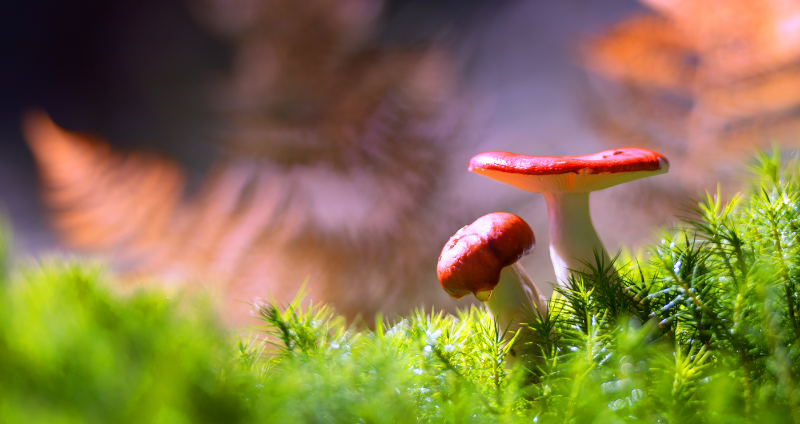

Fungi are a kingdom of their own. They are neither plants nor animals, although evidence suggests they share more characteristics with animals. Out of the estimated millions of fungi species to be in existence, mushrooms stand out most.
Mushrooms are differentiated from other fungi by their plant-like structure. A typical mushroom has a cap and stem formation that serves as the fruiting body, and at its base are root-like filaments called mycelium. The mycelium establishes extensive underground connections with roots, bacteria, and other fungi. Some ecologists call this network the wood-wide-web.
The conspicuous mushrooms also carry out important functions in their ecosystem inherent to their nature as fungi. They help sustain the growth of plants and their resistance to diseases, improve soil health, and alleviate the effects of climate change by sequestering carbon. These roles are ever more critical in the face of climate change, land use, food insecurity, pollution, and other unsustainable practices.
This guide digs deeper into mushrooms and fungi, often dubbed miracle workers, climate warriors, hidden helpers, and nature’s undertakers. Learn how they can be harnessed to help address human-created environmental issues.
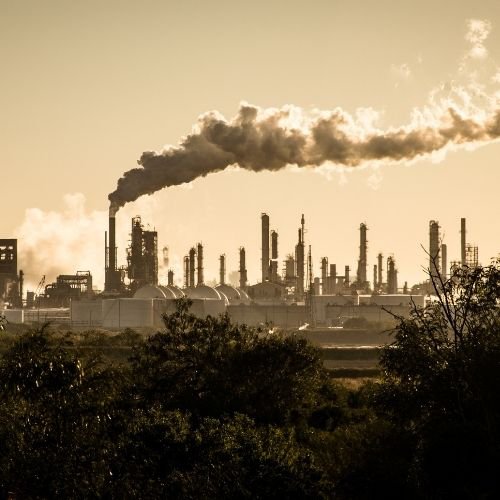
Thousands of mushroom species exist with varying colors, sizes, textures, and shapes. Get to know the basic characteristics that make mushrooms the way they are.
Mushrooms stand out in the biological world because they lack chlorophyll and can’t create their food through photosynthesis. This distinctive characteristic greatly influences the type of relationship mushrooms form with other organisms.
Mushrooms naturally grow from spores and thrive on a substrate (e.g., decaying wood) where they draw their nourishment. Nowadays, mushrooms can be grown out of kits, which include organic material such as grain or sawdust as the substrate.
A mushroom has mycelium that acts as its root system. This network is composed of filaments called hyphae that are in charge of getting nutrients to sustain the growth of the fungus.
Fungi form mushrooms as reproductive structures bearing spores or sporophores. The classic mushroom has the following major parts:
The mushroom’s cap or pileus shelters the spore-generating surface. Depending on the species, this could be shaped like a cone or an umbrella.
They are found on the cap’s underside. These paper-like structures are key in dispersing spores that fall to the ground and identifying mushrooms, which can have teeth, pores, or ridges.
The stem, also known as the stalk, is like the backbone of the mushroom structure. This part of the mushroom ensures stability and aids its overall development and growth.
Though not found in all mushrooms, the volva is a universal veil that initially envelops and is eventually outgrown by the mushroom.
Learn More: Read our article Mushroom Anatomy: A Deep Dive Into the Parts of a Mushroom
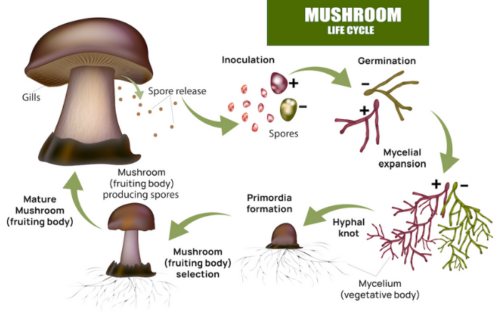
Mushrooms are multifaceted organisms, varying significantly in their species and classifications. Let’s explore the basic categories that define different types of mushrooms. These categories are based on the relationship between the mushroom and its environment.
Mycorrhizal mushrooms form symbiotic, nutrient-exchanging relationships with plants. They absorb sugars from plants and help deliver other nutrients from the soil back to the plants.
Remember, mushrooms cannot produce their own sugars via photosynthesis. Unlike plants, they do not have the chlorophyll necessary. Therefore, mycorrhizal mushrooms depend on the sugar plants produce.
In exchange, these fungi funnel nutrients such as phosphorus and water to plants.
Truffles are a prime example of mycorrhizal mushrooms.
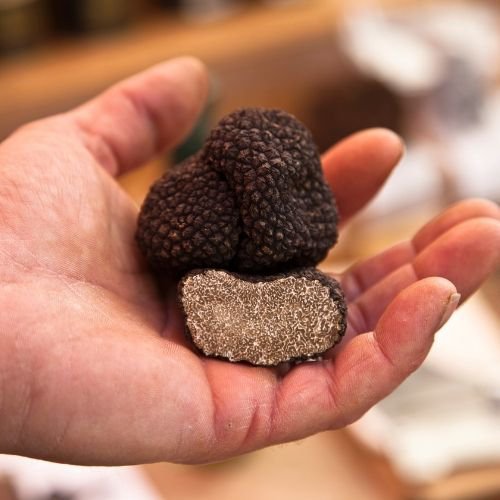
These fungi feed on living or dead organisms. The one-sided relationship can result in the parasite killing the host organism. For instance, the red lobster mushroom is a parasitic Hypomyces lactifluorum fungus that feeds on and transforms a host mushroom-like Russula.
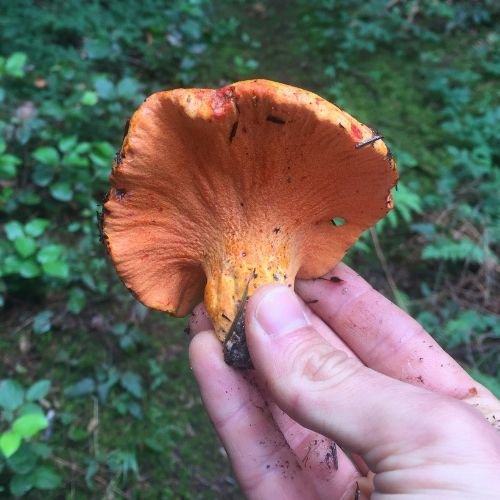
Most edible mushrooms that are readily available in grocery stores, such as morels and shiitake, are of this type. Saprotrophic mushrooms feed on dying or dead organisms like plants (saprophytes).
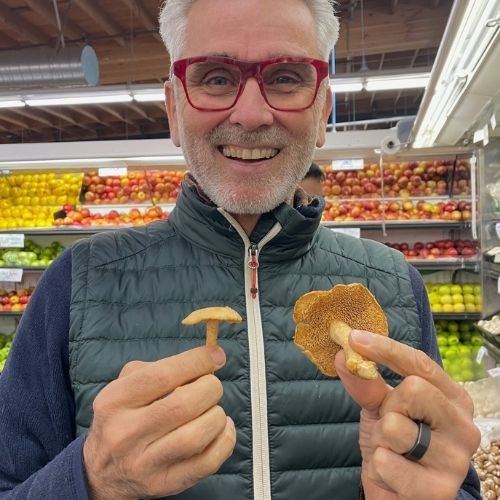
It all starts with one spore among the many dispersed from the fruiting body. Supposing this spore lands in an environment with the right conditions (i.e., the presence of adequate food, water, and humidity) on a substrate, it will germinate. Then, hyphae will start to emerge from the spore. Mating happens when the hyphae from a compatible spore unite and form mycelium.
The mycelium spreads out on the substrate and colonizes it for food and nutrients. Hyphal knots or dense mycelial clusters signal a mushroom about to be formed. These later become primordia or pinheads. Given the right conditions, the pinheads will mature into fully grown mushrooms. As these mature mushrooms disperse spores, the cycle comes full circle and starts anew.
Learn more: Read our article Mushroom Life Cycle: 4 Key Stages and Their Features.
Fungi are nature’s recyclers. They can free up nutrients stored in dead organisms, absorb these, and make them available in the soil. For example, white-rot fungi can break down lignin into water and carbon dioxide. The result of fungi’s decomposition activities is a more fertile soil that supports plant growth and food production.
Fungi and other natural decomposers also help clear the ground from what could have been piles of dead organisms. These plants and animals, as broken down, join the soil as organic matter. Mushrooms can also remove contaminants like petroleum products from the soil and may bring back or improve soil health.
Arbuscular mycorrhizal fungi (AMF) also play an important role in improving soil fertility. This article cites mechanisms that let AMF achieve this, including but not limited to producing glomalin to stabilize soil aggregations and dead mycelia, thus becoming organic matter in the soil.
To recall, mycorrhizae are fungi types that form symbiotic associations with plants. This mutually beneficial arrangement helps both organisms survive, particularly in tough environmental conditions like deserts.
Around 80% to 90% of plant species enter into this symbiotic partnership with fungi that live with the roots they colonized. This colonization takes two forms: ectomycorrhizae and endomycorrhizae. Ectomycorrhizae involve hyphae wrapping around the roots like a sheath. In contrast, endomycorrhizae, such as AMF, feature hyphae growing inside the root’s cortical cells.
Plant roots provide nutrients such as carbohydrates to the fungi. The mycorrhizal fungi’s hyphae act as an extension of plant roots. They penetrate the soil better because of their filament-like structure and absorb nutrients present in the soil. The mycelium can also expand to cover a bigger surface area to access nutrients in the surroundings. This parasitic humongous fungus demonstrates just how large a mycelial network can grow.
Mycorrhizal fungi are crucial in unlocking phosphorus, a critical component for plant growth. Plants absorb the nutrient through their roots, with fungi facilitating the nutrient uptake. They can also deliver and store water for plants.
Fungi are great at building the resistance of plants against soil-borne pathogens. This study explores how mycorrhizal fungi act as bio-protectors to their host plants against Verticillium wilt under hypothetical scenarios. The paper cites mycorrhizal plants’ improved nutrient and water status as a factor in their increased disease resistance.
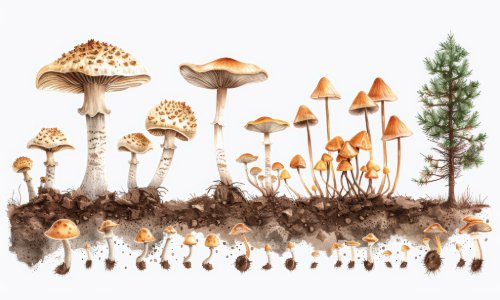
Edible mushrooms are a source of nutrition for humans. They contain phosphorus, B vitamins, Vitamin D, potassium, selenium, and copper. Mushrooms also have proteins and are used as delicious meat substitutes in vegan or vegetarian diets. They are a low-cost and sustainable meat alternative if not a new food product with mycoprotein.
Mushrooms require significantly fewer resources, like water, land, and energy, to cultivate compared to meat, nut, and soy protein sources. Mushroom farming also results in less carbon dioxide, according to the American Mushroom Institute.
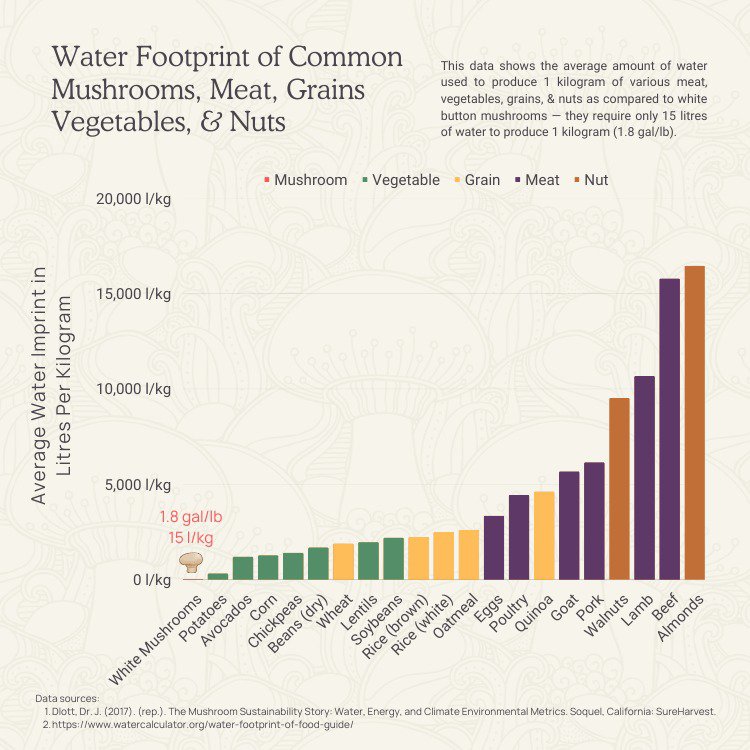
Animals like squirrels, deer, slugs, and those classified as fungivores also feed on mushrooms. Besides plants, fungi can forge mutualistic relationships with animals. One of the foremost examples of mutualism between fungi and animals is the case of ants that grow fungi.
Mycorrhizal fungi may be a global carbon sink, receiving 13 billion tons of carbon dioxide from plants. This study reveals that the carbon temporarily stored in the mycorrhizal mycelium equates to around 36% of the current annual CO2 from burning fossil fuels.
Further research in 2013 identified boreal forest soils as carbon sinks. Around 50% to 70% of the carbon found in the soil was from roots and associated fungi. The fungi connected to this stored carbon were predominantly mycorrhizal.
Scientists have also discovered that ectomycorrhizal fungi can be potent allies in forest carbon sequestration. These fungi significantly enhance the capacity of forests and trees to rapidly absorb CO2 while concurrently delaying the process that releases stored carbon back into the atmosphere.
Understanding and harnessing the power of fungi provide compelling possibilities in the broader context of ecosystem health and biodiversity. This emphasizes the significance of fungi in our world, not merely as organisms but as vital contributors to environmental balance and sustainability.
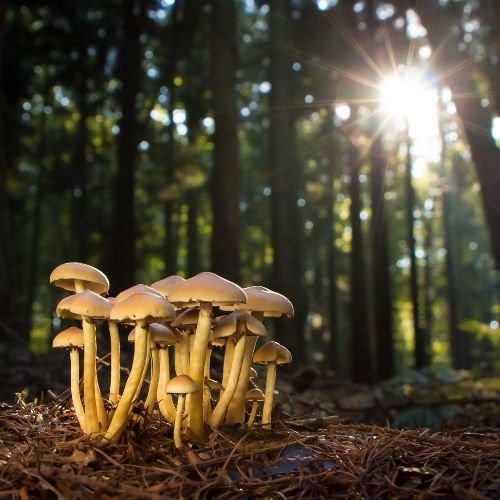
Fungi decompose plants and animals, which become part of organic matter in the soil. This soil organic matter is essential in forming soil aggregates. Soil aggregates have the following two key functions:
This resource also provides visual comparisons between compacted soil and aggregated soil. The relationship between organic matter and water retention is why farmers and gardeners add organic matter to the soil to increase its water-holding capacity. The Food and Agriculture Organization of the United Nations has reported that a 1% increase in soil organic matter results in an increase of 3.7% in the soil’s available water capacity.
Certain fungi play a role in stabilizing soil aggregates, which makes soil more resistant to erosion by water or wind. Arbuscular mycorrhizal fungi (AMF) produce a glue-like substance theorized to be responsible for aggregate stability.
AMF can form mutualistic relationships with nearly 90% of plant species. With their ability to improve soil quality, fungi can be part of a broader approach to soil management.
Mycoremediation is when fungi, be they mushrooms, their enzymes, or mycelium, are used to decontaminate a polluted site. Fungi are tapped for the job because of their diverse metabolic capacities. They have been studied to degrade various pollutants and contaminants, like petroleum products, pesticides, heavy metals, and even radiation.
Mycoremediation, or bioremediation, presents an environment-friendly and cost-effective way of correcting environmental damage. This approach has minimal to no impact on people and the environment.
An experiment conducted in Bellingham, Washington State, demonstrated the effects of treating a soil pile contaminated with diesel with oyster mushroom mycelium. After sixteen weeks, the soil sprouted hundreds of oyster mushrooms that had turned the toxic petroleum hydrocarbons into carbohydrates to feed their growth. The soil pile was originally contaminated with 10,000 ppm of polycyclic aromatic hydrocarbons and after sixteen weeks had 200 ppm.
This paper also reported a successful trial using the fungus Periconiella sp. The fungus demonstrated highly efficient and rapid degradation of biomedical waste. This process did not leave any trace of harmful effects on the population.
Learn more: Read our article, Mycoremediation: 8 Ways that Mushrooms Destroy Pollution
Fungi have been identified among organisms like bacteria and algae to be environmental bioindicators or those that can be used to determine the quality of an environment. They play dual roles in mycoremediation and biomonitoring of pollutants and are sensitive to changes in soil.
The diversity of mushrooms may also indicate forest health. This study probes into the possible relationship between mycorrhizal fungi diversity and the health of their associated forest trees. It discusses the decline in ectomycorrhizal species in Europe during the 1980s, which coincided with the degree of forest dieback.
However, the study could not definitively conclude whether forest mushrooms can serve as a bioindicator of forest health. What’s established for now is the link that goes deep between friendly fungi and plants. This wood-wide web formed through mycelium can connect many plants to distribute nutrients and water between them. This interconnectedness also allows for trees to support similar or different species.
Fungi have an impressive diversity in their ecological roles. They can be both beneficial and parasitic, significantly influencing their surroundings. Here are some key examples:
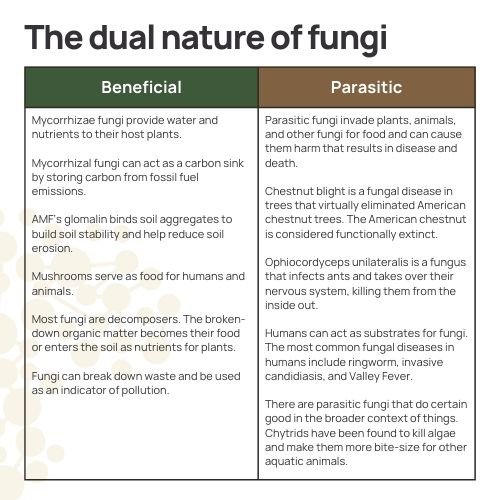
Understanding fungi and their roles can address common misconceptions surrounding them. Fungi feed on organic matter as they are food themselves for other organisms. They can live with their host without bringing the latter harm. Other times, they can cause their hosts to weaken or die. Some fungal infections in humans may be a sign of a weakened immune system.
For the good they perform for plants, animals, and the environment, fungi deserve protection against factors that threaten their existence. Take a look at the major threats and possible actions to protect fungal communities.
In 2009, scientists found early fruiting patterns among spring-fruiting fungi like morels. This indicates the significant influence that climate change has on the behavior and growth trajectories of fungi.
The Microbiology Society examined the sectors that could be affected by any changes to fungi brought about by climate change. Agriculture is one sector, given the benefits terrestrial plants derive from mycorrhizal fungi. Climate change can also exacerbate abiotic stressors that affect mycorrhizal associations, which also affect crop rotations, crop timing, and other key aspects of agriculture.
Warming global temperatures can have a concerning impact on the spread of pathogenic fungi. According to a study from Duke University School of Medicine, warmer temperatures may have caused genetic mutations in the pathogenic fungus Cryptococcus deneoformans that could lead to higher heat resistance. This development is a potential threat to humans, who have been shielded from fungal diseases because of their body heat.
While some fungi are allies in ecosystem health, other fungal species can nonetheless pose some threats to human or ecological health.

Mushrooms and fungi play many roles beneficial to the planet and its inhabitants. They decompose organic materials, provide and deliver nutrients that sustain plants and animals, enrich soil, store carbon, remediate contaminated sites, and become food to other organisms.
These roles are all essential to the functioning of nature under the bigger threat of climate change. Fungi are not exempted from climate change, which can be felt by other organisms that depend on them.
Guarding the good fungi and addressing harmful fungi is also essential for protecting ecosystem health and biodiversity. We can only hope that fungi will continue to be integrated into broader strategies aimed at combating climate change. After all, they’re the ultimate climate warriors of the natural world.

 .
.Disclaimer: The information or products mentioned in this article are provided as information resources only, and are not to be used or relied on to diagnose, treat, cure, or prevent any disease. This information does not create any patient-doctor relationship, and should not be used as a substitute for professional diagnosis and treatment. The information is intended for health care professionals only. The statements made in this article have not been evaluated by the Food and Drug Administration. Any products mentioned are not intended to diagnose, treat, cure, or prevent any disease. The information in this article is intended for educational purposes. The information is not intended to replace medical advice offered by licensed medical physicians. Please consult your doctor or health practitioner for any medical advice.